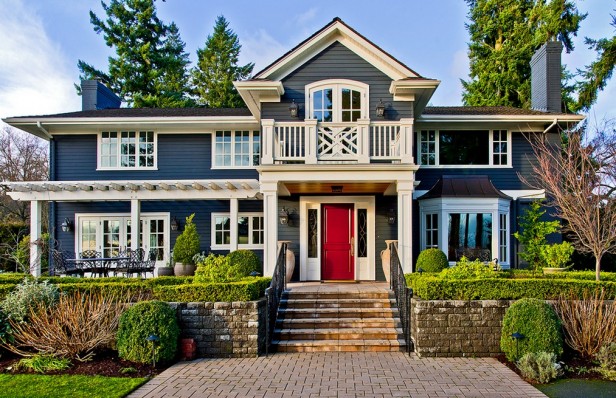Two distinct trends are predicted to emerge for exterior colors in the housing market according to experts.
One is a return to homes in solid white with white siding and trim.
This trend evokes an emotional nostalgia for classic neighborhoods which new homeowners are flocking to as this reminds them of a parent, grandparent or family members home.
Some of these homes may also feature other classic details such as a white picket fence to match the white house.
On the other side of the color scale are homes that have siding in bolder or deeper trim colors, which can create a look that stands out well from other homes in the neighborhood.
These homes may feature siding shades in lighter and cooler environmentally friendly options often chosen for energy efficient reasons.
Some other color choices for 2016 are cool, neutral or warm colors. Cool colors come in blues and greens, neutral tones are in taupe and beige and warm colors are in yellows, salmon and lemon tones or mustard and cream.
Green building choices are becoming more and more popular, according to a study by McGraw-Hill Construction.
The green building market made up 17 per cent of residential construction in 2011 and totaled $17 billion in economic activity. That figure is expected to balloon to 38 per cent of the market for 2016 and up to $114 billion in residential spending.
While the green building market expands, color can sometimes be a challenge as many paints and primers contain volatile organic compounds (VOCs) –materials that can be toxic to humans, animals and the environment, according to the EPA.
This means exterior color can be a challenge to green homebuilders if they are using siding that requires painting on the job-site. Acrylic latex paint is one of the most common exterior color options for vinyl siding and typically contains VOCs.
So it’s important to consider features and details of the exterior that will not or cannot be painted. The color of the roof along with brick and rock details affect the overall look and need to be considered in each color choice. The idea is to develop a color palette that brings a unified look with curb appeal.
When focusing on exterior colors for a home, it’s a good idea to go by the “70-25-5” rule with 70% of the color for the body, 25% for trim such as fascia, windows and overhangs and another 5% for the accent color on doors and shutters.
Neighboring homes should be considered as the home should be compatible as well as distinctive. It’s one thing to stand out, it’s another thing to clash. So keeping these color trends in mind will make a difference.
If you are looking for a siding company in Nanaimo and Parksville or looking for some exterior renovation inspiration call Phoenix Siding today.



